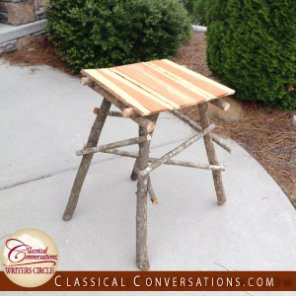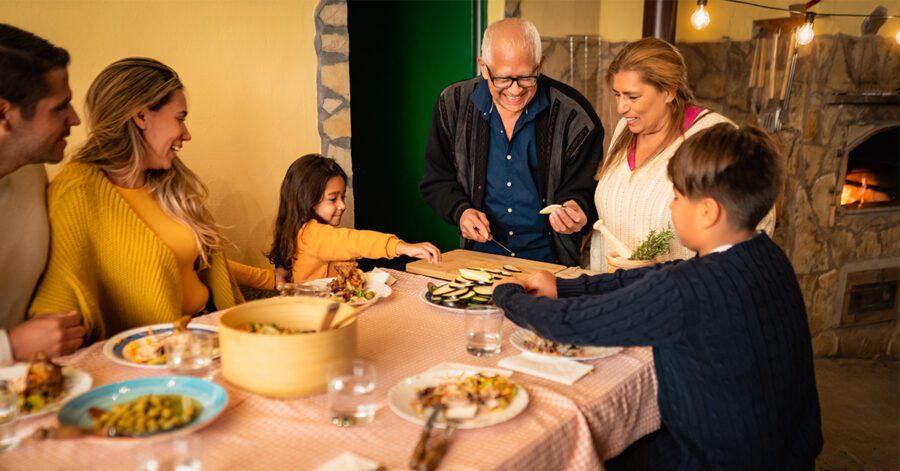While cleaning out a cabin on my farm in 2013, I came across an old rustic wood table made of tree branches. My wife saw this piece during the cleanup process and suggested we take it home. It now lives on our back porch, sporting the decorations of the season.
Over time my wife hinted that she would like for me to make her another table like this one. I meditated on the project for months, mentally putting small logs together. Finally, I reached the point of execution. I examined in detail the table construction and then sought the building materials.
I harvested a number of small trees from the dam of my farm pond. (Who let those trees grow on the dam anyway?) I pulled out some cedar planks trimmed from another project and used those for the table top. Then I crafted the legs, based on the prototype discovered in my cabin. This whole process took a number of hours as I bent nails, predrilled nail holes, and broke three drill bits. This project proved more challenging than I had imagined. With the project apparently complete, I checked its stability. It was so wobbly, I would not trust it to hold a stack of Challenge I books. After adding two more stabilizing pieces, I declared the project complete. Later I learned that hickory logs present particular challenges for nail driving. So, that is what hickory looks like, eh?
My wife loved the table. She sent photos to her sister, who of course wanted one for her porch. I had my second commissioned project. This time I pulled out my magic tool. I had never used the nail gun that came with my air compressor, but suspected that it would suit my purposes perfectly. Sure enough, it turned me into a fastening hardware wizard. Not only was it efficient, it was fun.
With the completion of this second table, I had my sister-in-law’s birthday present ready. There was only one problem. My wife liked that table, too. It was a perfect match to the first table and, well, she really needed it, of course.
By now, I found myself enjoying this new hobby. I selected all cedar wood for this next project, because now I was an artist. In no time, I fashioned another table for the birthday and it now proudly resides on a suburban porch in Raleigh.
I looked for the next project. I found some wood from a fallen barn on my farm and popped together tables and shelves of various shapes and sizes. To raise funds for my mission trip to Uganda in April, I sold tables to my neighbors.
Now I find myself working in the garage in my spare time, taking my natural materials and fashioning one-of-a-kind creations. This wood from my dam became works of art.
Last month my family spent a couple of nights in a cabin along the Blue Ridge Parkway. As we stacked firewood on the porch, a piece of split pine called out to me; its curvy grain could not bear to be burned, so we brought it home. It is now a small stool sitting on my hearth. My family protested my plans to sell it, so I suppose we will keep it as a memento of our trip to the Parkway.
Through this brief foray into rustic furniture construction, I have learned some important lessons. First, the materials often determine the project. When I pick up a piece of wood, I imagine what this piece wants to become. With one board I planned to make a table, but I could not determine where to cut it. Then I realized the board’s real purpose. With two cedar logs supporting it, the board now serves as a small bench on my front porch. It was never meant to be a table. I have spent far too much energy forcing my will on objects, situations, and people.
Second, my techniques improve through trial and error. I rarely get it right in my first attempt, but I learn as I go. This applies to everything from parenting to pastoring to building. My latest tables have firm legs without all the bracing. The more I do this the better I get, as long as I keep learning.
Finally, I am learning what it means to be an artist. God has made me to be creative; I am made in His image, and He is the Creator. In my work, whatever it is, I seek God’s guidance to make something beautiful and useful.




